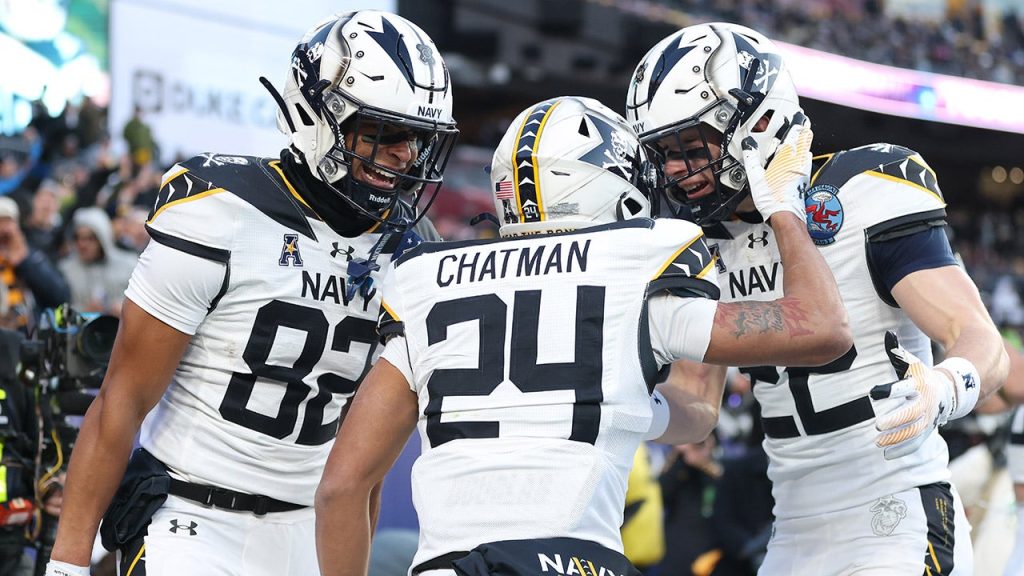The 125th Army-Navy game, a storied rivalry in college football, unfolded with a familiar script: Navy dominance. The Midshipmen sailed to a decisive 31-13 victory over the Black Knights, extending their lead in the all-time series to 63-55-7. The contest, held at Landover, Maryland, showcased a potent Navy offense that capitalized on opportunities and a resilient defense that stifled Army’s attempts to mount a comeback. This victory secured the coveted Commander-in-Chief’s Trophy for Navy, a testament to their triumphs over both Army and Air Force this season.
The game began with Navy seizing early control, marching down the field for a touchdown on their opening drive. An interception further fueled their momentum, converting the turnover into another seven points and establishing a 14-0 lead. Army managed to respond with a touchdown of their own before halftime, narrowing the deficit to seven points. Emerging from the break, Army added a field goal to inch closer, making it a four-point game. However, Navy’s offensive prowess resurfaced with a spectacular 52-yard touchdown catch and run by running back Eli Heidenreich, restoring a comfortable double-digit lead.
Army’s hopes of a rally were repeatedly dashed by Navy’s opportunistic plays and stout defense. Following a Black Knights field goal, Navy faced a crucial fourth-down situation deep in their own territory. A daring fake punt call proved successful, with nose tackle Landon Robinson rumbling for a 29-yard gain to keep the drive alive. This gutsy play culminated in a Blake Horvath rushing touchdown, extending Navy’s advantage to 28-13. Army’s final attempts to close the gap were thwarted by interceptions, allowing Navy to seal the victory with a field goal and ultimately run out the clock.
Beyond the on-field action, the Army-Navy game held significant cultural and political weight. President-elect Trump attended the game, his first appearance at the event since 2020, accompanied by a notable entourage of figures from various spheres. This marked a return to a tradition for Trump, who had attended the game for five consecutive years prior to this. The presence of such prominent figures underscores the game’s significance as a national spectacle.
The game’s outcome defied recent trends in the rivalry. While Army had claimed victory in six of the eight preceding meetings, Navy’s resurgence in this year’s contest reasserted their dominance. The Midshipmen’s offensive display also bucked a statistical trend, as the “under” had been the prevailing betting outcome in 18 of the previous 19 Army-Navy games. The total points scored in this game exceeded the over/under line, providing a windfall for those who bet on the “over.”
Looking ahead, both teams now set their sights on their respective bowl game appearances. Navy, with a 9-3 record, will face Oklahoma in the Armed Forces Bowl. Army, now 11-2, awaits its opponent in the Independence Bowl after Marshall withdrew due to a significant number of players entering the transfer portal. The future of the Army-Navy rivalry is also set, with the 126th edition scheduled for Baltimore in 2024 and the 2026 game slated for East Rutherford, New Jersey.
The 2023 Army-Navy game served as a powerful reminder of the enduring traditions and fierce competition that define this historic rivalry. Navy’s commanding performance, secured by timely plays and a dominant offensive display, re-established their place atop the series. The game’s significance extended beyond the playing field, attracting national attention and the presence of prominent figures. As both teams move on to their bowl game matchups, the echoes of this year’s Army-Navy clash will undoubtedly resonate throughout the college football landscape.










